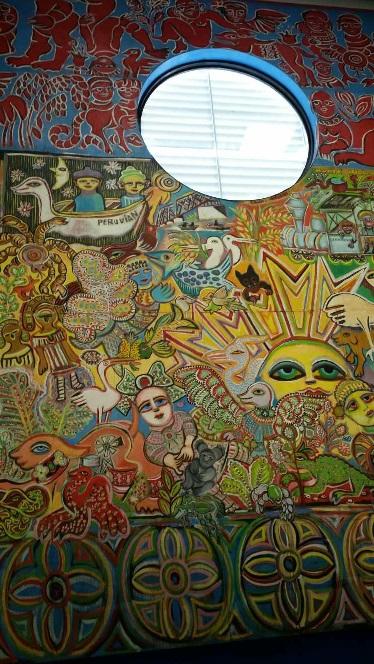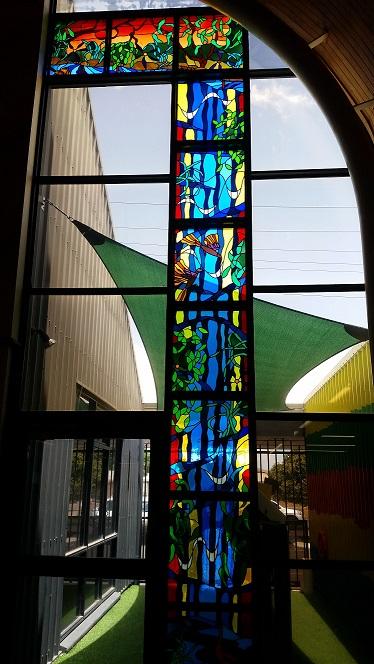Library artworks
Mirka Mora mural - The Painting of Life
 |
Mirka Mora was an internationally acclaimed Paris-born Melbourne artist who, in 1983, accepted the commission of the first Burdekin Theatre manager, John Young, to paint two murals for the Burdekin Cultural Complex. It took Mirka several weeks to paint the library’s mural, reaching 6.1 metres high and 5.7 metres wide – she needed scaffolding to paint the higher areas. In her biography, Mirka says of the experience:
Hundreds of people came to watch Mirka at work, and it is said that she often allowed locals to pick up brush and paint and join her! She named it “The Painting of Life.” The mural was put into storage for months to wait for the library building to be completed. It has kept its place in the library ever since, but many things around it have changed. For several decades it overlooked a fish pond, but the water eventually damaged the mural. The restoration and conservation of the mural occurred in 2012 as a result of funding from the Australian Government through the Community Heritage Grants program. So now you can appreciate “The Painting of Life” in great detail from up close. It has become the defining feature of the Burdekin Library and we are very grateful to John Young and Mirka Mora for their efforts. Some things to look for in the mural:
The library holds Mirka Mora’s fascinating autobiography in the Local History Collection.* Mora, Mirka. (2000). Wicked but virtuous: My life. Victoria: Penguin Books Sadly, Mirka Mora passed away on 27 August 2018. The St Kilda Historical Society has created a website to show Mirka’s unfolding story told by Janine Burke through her essay Seaside Angel and interviews with family, colleagues and friends in Remembering Mirka. |
The Waterfall - stained glass window
 |
This magnificent stained-glass window was completed by Gary Burgess for the opening of the Burdekin Library in 1984. The vertical shape of the window was a determining factor in the resultant design. For this reason, and the fact that water is the pulsing life force of the Burdekin district, Burgess decided to depict a waterfall. The flowing of the water, the falling and final coming to rest in a quiet pool is easily seen. The glass Gary Burgess used in this fine example of his work is German, mouth blown “antique” glass with the emphasis on strong, vibrant colours. One reason for this choice was the window’s westerly aspect. Anything less than vibrant colour would probably have been bleached by the powerful afternoon sun. Secondly, the antique glass has an extremely high transparent sharpness which Burgess felt was ideal to express water cascading down a series of ledges. |

